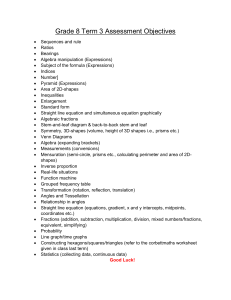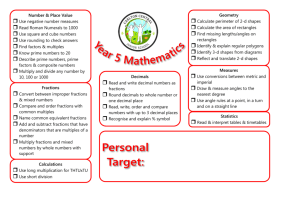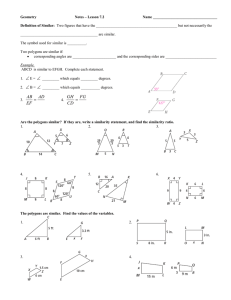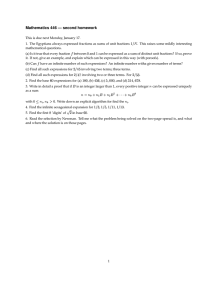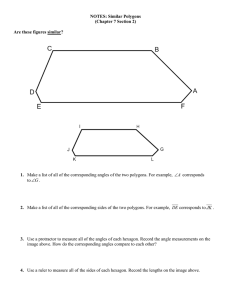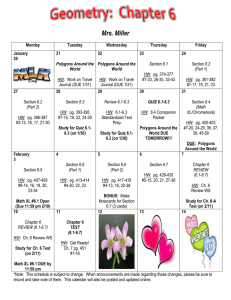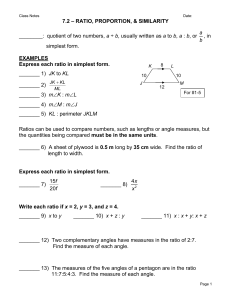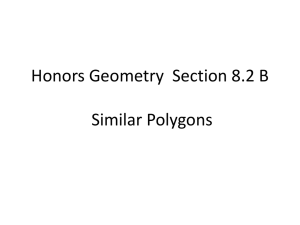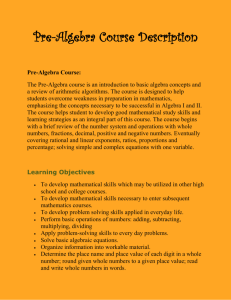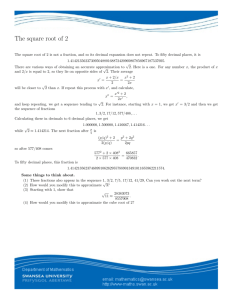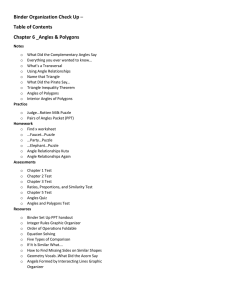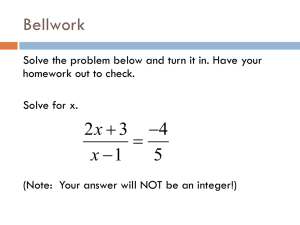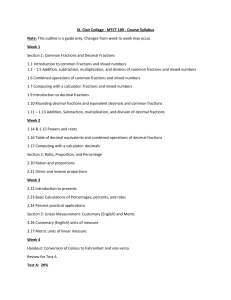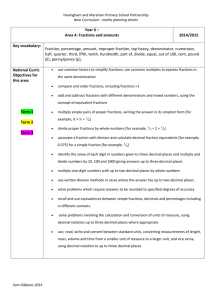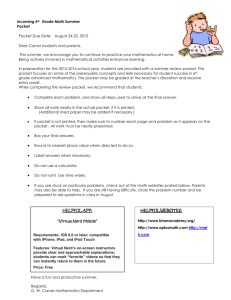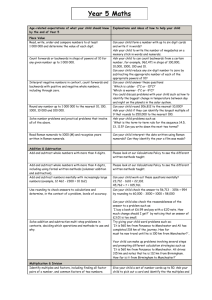Ex • use prime numbers, common factors and common multiples for
advertisement
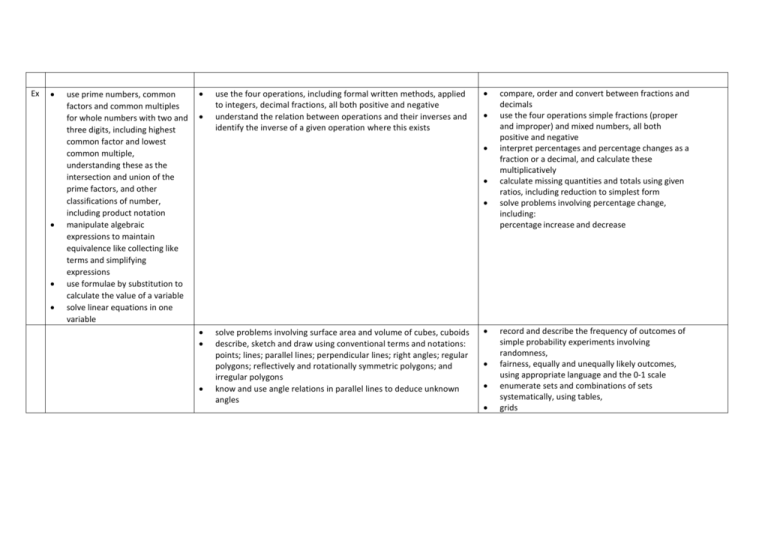
Ex use prime numbers, common factors and common multiples for whole numbers with two and three digits, including highest common factor and lowest common multiple, understanding these as the intersection and union of the prime factors, and other classifications of number, including product notation manipulate algebraic expressions to maintain equivalence like collecting like terms and simplifying expressions use formulae by substitution to calculate the value of a variable solve linear equations in one variable use the four operations, including formal written methods, applied to integers, decimal fractions, all both positive and negative understand the relation between operations and their inverses and identify the inverse of a given operation where this exists solve problems involving surface area and volume of cubes, cuboids describe, sketch and draw using conventional terms and notations: points; lines; parallel lines; perpendicular lines; right angles; regular polygons; reflectively and rotationally symmetric polygons; and irregular polygons know and use angle relations in parallel lines to deduce unknown angles compare, order and convert between fractions and decimals use the four operations simple fractions (proper and improper) and mixed numbers, all both positive and negative interpret percentages and percentage changes as a fraction or a decimal, and calculate these multiplicatively calculate missing quantities and totals using given ratios, including reduction to simplest form solve problems involving percentage change, including: percentage increase and decrease record and describe the frequency of outcomes of simple probability experiments involving randomness, fairness, equally and unequally likely outcomes, using appropriate language and the 0-1 scale enumerate sets and combinations of sets systematically, using tables, grids
